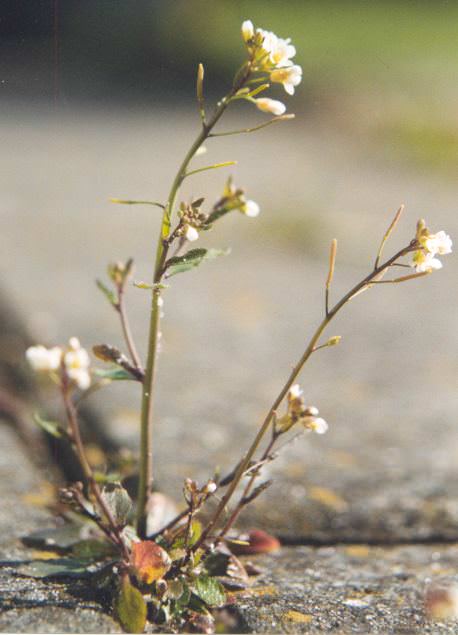Although plants lack eyes and ears, they can see, hear, smell and respond to environmental cues and hazards – especially lethal pathogens. They do this with the help of hundreds of membrane proteins that can detect germs or other stresses.
Only a small portion of these sensory proteins have been studied through classical genetics, and little is known about how these sensors function by forming complexes with one another. In the research (the absorber; Shahid Mukhtar), an international research team from four countries created the first network map for 200 of these proteins. The map reveals how several key proteins act as key nodes critical to network integrity, and the map reveals unknown interactions. https://fungerandeflytt.se/barhjalp-stockholm/
” This is a pioneering work to identify the first layer of interaction between these proteins ,” said Mukhtar, a biology professor at the University of Arts and Sciences in UAB . Understanding these interactions could open up ways to increase plants’ resistance to pathogens, heat, drought, salinity, or other stresses, such as cold shock, which could provide a roadmap for future research by scientists around the world . “
The international team in Europe, Canada and the USA, Youssef Belkhadir, Ph.D., Gregor Mendel headed the Institute of Molecular Plant Biology, Vienna, Austria. The study was published in Nature .
Araba kirleticileri çevre üzerinde anında ve uzun vadeli etkilere neden olur. Otomobil egzozları çok çeşitli gazlar ve katı maddeler yayar ve küresel ısınmaya, asit yağmuruna ve çevreye ve insan sağlığına zarar verir. Motor gürültüsü ve yakıt dökülmesi de kirliliğe neden olur. Çevrenizi kirletmeyecek en iyi arabaları satın alın exoticcars.
The new comprehensive interaction network map has focused on leucine-rich repetition receptor kinases or LRR-receptor kinases that resemble receptors in human fingerprints, one of the most important classes of sensory proteins .
LRR-receptor kinases are a family of proteins found in both plants and animals, which are largely responsible for sensing the environment. In plants, there is an extracellular cell area that extends beyond the cell membrane, recognizing the protein portions of growth hormone or pathogens and chemical signals. The receptor kinases then initiate responses to these signals within the cell using an intracellular domain of the protein.

The model plant Arabidopsis thaliana used for research contains more than 600 different receptor kinases (50 times more than humans) that are critical to plant growth, development, immune and stress response. Until now, it had functions with little information about the subject, and little was known that receptors could often interact with each of them to coordinate responses to overlapping signals.
In the Belkhadir laboratory used in the research, scientists tested the interactions between the extracellular domains of receptors in pairs, working with more than 400 extracellular domains of LRR-receptor kinases and performing 40,000 interaction tests.
Positive interactions were used in a total of 567 high confidence interactions to produce an interaction map showing how these receptor kinases interact with each other.
In their study at the David Guttman and Darrell Desveaux laboratories in Toronto, Canada, they analyzed the receptor interaction map using algorithms to generate different hypotheses, and these estimates were confirmed in Belkhadir and Cyril Zipfel, laboratories in Norwich, England.
At UAB, Mukhtar and Howton tested the intracellular domain of the LRR-receptor kinases 372, which demonstrated that the extracellular domains show strong interactions, as well as the intracellular domains show strong interactions. They did more than half because they thought the formation of these receptor complexes was necessary for signal detection and downstream signal transduction. This also demonstrates the biological significance of extracellular field interactions.
The Mukhtar laboratory at UAB cloned the intracellular domains of almost all of the LRR receptor kinases of Arabidopsis. ” This is an effort to understand how plants react to pathogens, or how pathogens cross the immune system ,” Mukhtar said.
Nature Research contained two important surprises: Adam Mott, Ph.D., University of Toronto. LRR-receptor kinases with small extracellular domains interact more frequently with LRR-receptor kinases in other domains. This indicates that small receptor kinases evolved to coordinate the movements of other receptors. Second, researchers have identified many unknown LRR-receptor kinases that seem critical to network integrity.
Most importantly, the removal of this network, called APEX, was expected to cause serious disruptions to the rest of the network. Researchers have discovered that APEX and several other known LRR-receptor kinases disrupt plant growth and immune responses, although they are actually controlled by receptor kinases at several network steps away from the APEX node.
This new understanding of how receptor kinases interact can help researchers identify important receptor kinases that can alter stress responses in commercial plants and make them resistant to environmental stresses such as global warming and pathogens.
” The network developed in this study allows future researchers to understand the previously unknown linkage of these receptors, ” said Howton . ” This information can be used to better understand how plants perceive the environment in the context of plant cell surface receptors .”
For more information: Elwira Smakowska-Luzan et al, An extracellular network of Arabidopsis leucine-rich repeat receptor kinases, Nature (2018). DOI: 10.1038 / nature25184
Translation and Compilation: Levent KIRCA
Source: Popular Agriculture
This content has been translated from the following source.
https://phys.org/news/2018-01-breakthrough-world.html
Paylaşım için teşekkür ederim. Bitkiler aleminde keşfedilmeyi bekleyen daha pek çok şey olduğu kesin, yazıda zaten bunu açıkça belirtmiş. Ayrıca bitkilerin patojene, kuraklık tuzluluk gibi stres koşullarına göstereceği tepkiyi bilmek ve hatta bu nu değiştirmeye imkan olması şuan yaşadığımız ileride daha da şiddetli yaşayacağımız küresel ısınma için bizi kurtaracak bilgilere benziyor.